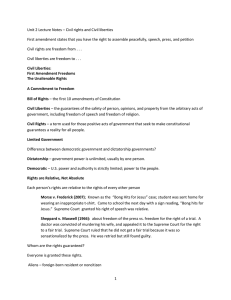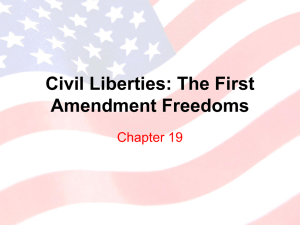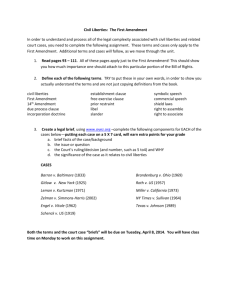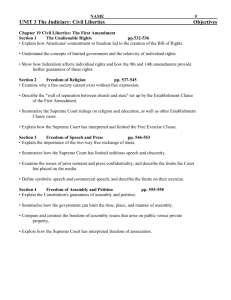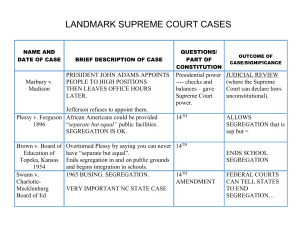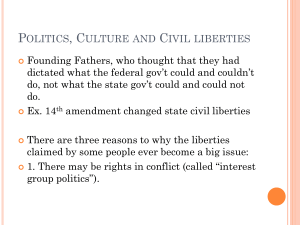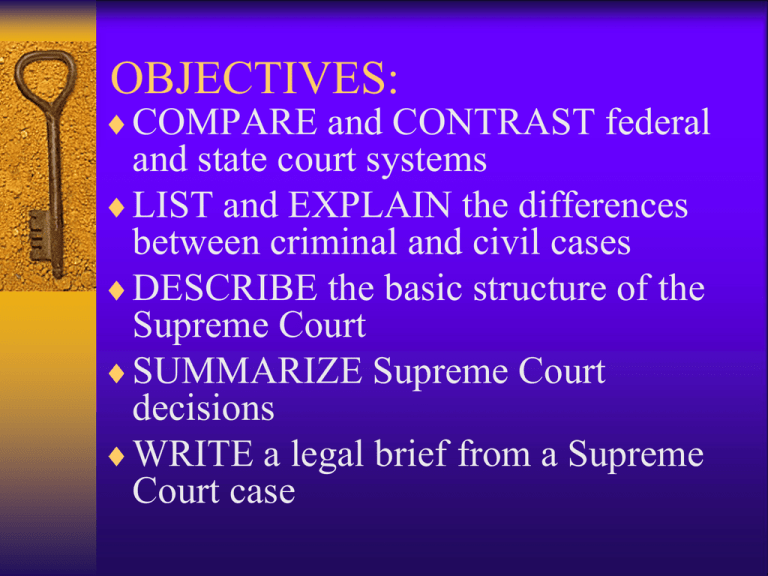
OBJECTIVES:
COMPARE and CONTRAST federal
and state court systems
LIST and EXPLAIN the differences
between criminal and civil cases
DESCRIBE the basic structure of the
Supreme Court
SUMMARIZE Supreme Court
decisions
WRITE a legal brief from a Supreme
Court case
April 20
Vocab. Quiz
Article
Criminal Rights Amendments
Notes over Civil Liberties/group
discussion
Student wears a baseball hat to
school and refuses to take it off
when asked by an administrator.
The student is sent to ISR for rule
violation and insubordination.
Where does the school get the
authority to discipline the student?
Another student starts a fire in a
trashcan and destroys part of the 300s
bathroom. The student is suspended
AND arrested.
From where does the authority come to
arrest her?
What if the student wanted to
“challenge” or “fight” the decision
made by the school or local
police…where would he/she go?
US GOVERNMENT
The Judicial Branch Notes
The Unalienable Rights
When the United States was
formed the framers wanted to
ensure individual rights against
those of the government.
However, these rights can be
restricted when they come into
conflict with the rights of others.
Each person’s rights are relative to
the rights of every other person.
Example: Every person has the
right of free speech, but no one
enjoys absolute freedom of speech.
A person can be punished for using
obscene language.
Apollo Media Corporation v.
United States 1999, upheld a
federal law that makes it illegal for
anyone to send obscene and
intentionally annoying e-mail via
the internet.
The Constitution
Includes a general listing of the
rights of the people, Bill of Rights
The 13th and 14th Amendments
added guarantees of personal
freedoms.
Guarantees both rights and liberties
to the American people.
Civil liberties are protections
against government.
– They are guarantees of the safety of
persons, opinions, and property from
arbitrary acts of government.
– Examples: Freedom of Religion,
speech, and press, and the guarantee
of a fair trial.
Civil rights are reserved for those
positive acts of government that
seek to make constitutional
guarantees a reality for all people.
– Examples: Prohibiting
discrimination on the basis of race,
sex, religious beliefs, or national
origin, set out in the Civil Rights Act
of 1964.
When Rights Conflict
Example: Freedom of the press
versus the right to a fair trial.
Sheppard v. Maxwell, 1966--- (p.
534)
– What was the issue and what was the
court’s decision?
– Do you agree with the court’s
decision?
To Whom Are Rights
Guaranteed?
Is it right to restrict the travel of
aliens within the United States?
Was the US justified in the forced
evacuation of people of Japanese
descent on the Pacific Coast?
14th Amendment
The Bill of Rights apply against
the National government, not the
states.
State constitutions contain a bill of
rights.
States also cannot deny basic rights
because of the 14th Amendment’s
Due Process Clause.
Due Process Clause– means that
NO State can deny to any person
any right that is basic to the order
of liberty.
– Process of Incorporation– The Court
has merged most of the guarantees in
the Bill of Rights into the 14th
Amendment’s Due Process Clause.
9th Amendment
Declares that there are rights
beyond those set out in the
Constitution.
– Examples: The right of an accused
person to not be tried on evidence
that is unlawfully gained.
– The right of a woman to have an
abortion without undue interference
by government.

